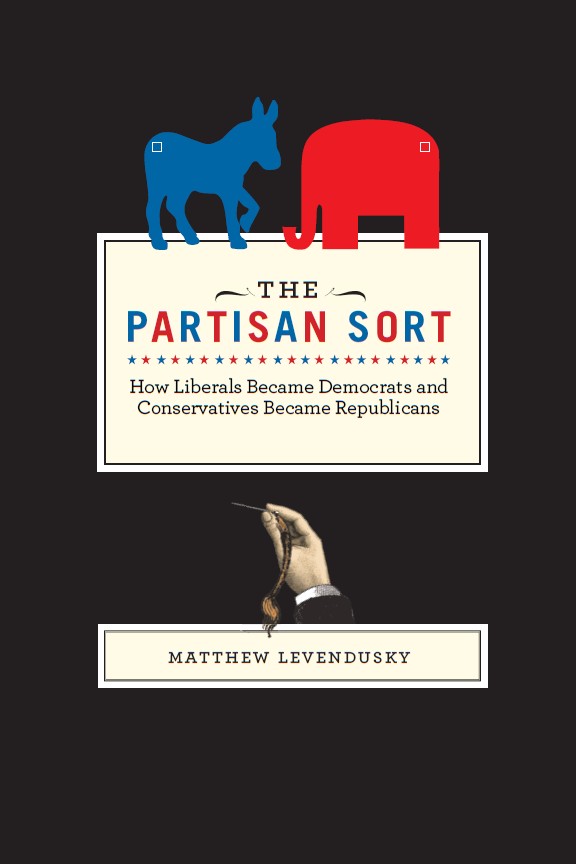Cloth: 978-0-226-47364-2 | Paper: 978-0-226-47365-9 | Electronic: 978-0-226-47367-3
DOI: 10.7208/chicago/9780226473673.001.0001
AVAILABLE FROM
University of Chicago Press (cloth, paper, ebook)Amazon Kindle (PDF)
Barnes & Noble Nook
Brytewave (CafeScribe-Follett Higher Ed)
Chegg Inc
Copia Interactive
Google Play
Kobo
Scribd
University Press Scholarship Online (UPSO)
ABOUT THIS BOOK
As Washington elites drifted toward ideological poles over the past few decades, did ordinary Americans follow their lead? In The Partisan Sort, Matthew Levendusky reveals that we have responded to this trend—but not, for the most part, by becoming more extreme ourselves. While polarization has filtered down to a small minority of voters, it also has had the more significant effect of reconfiguring the way we sort ourselves into political parties.
In a marked realignment since the 1970s—when partisan affiliation did not depend on ideology and both major parties had strong liberal and conservative factions—liberals today overwhelmingly identify with Democrats, as conservatives do with Republicans. This “sorting,” Levendusky contends, results directly from the increasingly polarized terms in which political leaders define their parties. Exploring its far-reaching implications for the American political landscape, he demonstrates that sorting makes voters more loyally partisan, allowing campaigns to focus more attention on mobilizing committed supporters. Ultimately, Levendusky concludes, this new link between party and ideology represents a sea change in American politics.
AUTHOR BIOGRAPHY
Matthew Levendusky is assistant professor of political science at the University of Pennsylvania.
REVIEWS
“An excellent book, one I would recommend to scholars of American public opinion as well as those who follow American electoral politics closely.”
TABLE OF CONTENTS
List of figures
List of tables
Acknowledgments
1. The Transformation of the American Electorate
2. Why Voters Sort
3. Have Voters Sorted?
4. Testing Competing Explanations for Sorting
5. Untangling the Causes of Sorting
6. How Voters Sort
7. The Impact of the Sorted
Appendix Data Used
Notes
Bibliography
Index
